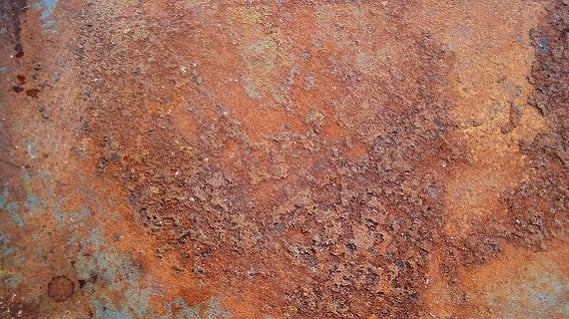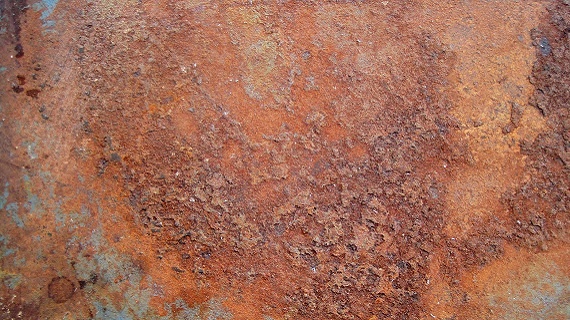
Preventing corrosion may be almost impossible: it occurs in all types of pipes sooner or later, due to the natural chemical reactions between the pipework material and the environment.
However, there are ways to slow the process down and elongate the life time of a pipe to reduce costs, disruption to your water system and the build-up of toxic composites.
An understanding of what causes corrosion, its effects and the techniques to treat it is compulsory knowledge in preventing it from taking hold in your pipework.
What is pipework corrosion and how is it caused?
Put simply, corrosion in pipework is a deterioration of the pipe’s surface. It can occur as a result of a chemical reaction or a microbiological outbreak. The most notable type of corrosion is metal rusting where iron oxide is produced in response to a reaction between oxygen and water. The oxide weakens the bonds of the metal; resulting in a brittle and crumbly structure.
Most metals are susceptible to corrosion, but the rate of corrosion can be affected by the following:
- Thickness of the pipe (thinner walled pipes are more susceptible to corrosion)
- Age of the water system
- Stagnation time of the water within pipework
- PH, temperature, oxygen and mineral concentrations of the water
- Velocity and pressure of water within the pipe
- Microbiological outbreak, such as legionella
- Presence of sand, sediment and other suspended solids
The Building Services Research and Information Association (BSRIA) have stated that the most reported form of corrosion is on thin-walled pipes. When corrosion occurs, it is in patches, and these patches become positively charged relative to their surroundings, leading to localised pitting. The addition of fresh water flowing over the corroded pipe can rapidly progress the pitting into perforation and pipes that were to last years are damaged within months.
What are the consequences of corrosion?
Health problems
The corrosion of copper and lead pipes in particular is incredibly dangerous as it can release metal composites into the water supply and put the consumer at risk of toxicity. The hazard associated with the corrosion of lead pipes is so great that their installation is now prohibited in the UK, although they are still present in homes that were built before 1970.
The contamination of lead can result in mental and physical development problems in children and high blood pressure and kidney problems in adults. Similarly, anyone who consumes copper contaminated drinking water will experience gastrointestinal issues in the short term and liver and kidney problems after continued exposure.
Decreased efficiency
The performance of the water system will inevitably be compromised when corrosion is present in pipework. The presence of rusting and oxidisation of metals reduce the water flow and even completely destroy valves and other components.
Failure of the entire system
Pipework that suffers from heavy corrosion will have reduced metal thickness and a weaker structure. This is especially problematic for thin walled pipes that have a thickness of just 1.5mm, for example, and where corrosion spreads in small patches this can lead to perforation. The leaks as a result of this could mean a failure of the entire water system and significant damage to the building.
Staining and reduced water quality
The water quality will be significantly reduced and the increased concentrations of metal composites often impart a bitter taste to the water. The staining of pipes, basins and drains is a tell-tale sign that corrosion is present. Corroded copper and brass pipes can lead to blue-green stains and iron or steel systems will suffer red stains.
What can you do to prevent it?
All pipework will suffer from corrosion at some point and whilst it is almost impossible to prevent it, there are steps that you can take to significantly reduce the rate at which it develops.
Pre-comission cleaning
The time between a new installation of pipework and its first use i.e. comission is a critical period. At this stage, cleaning the system will significantly increase its safety and longevity in the long run. This is because components like valves can be cleaned before they are put into their set positions, and any debris or dirt left in the pipework during the installation process can be fully removed.
The process will involve flushing and draining pipework using water to until water clarity is achieved. The addition of a cleansing passivator will add a protective layer to the pipework, stabilise its surface and reduce the possibility of corrosion.
Water chlorination
As mentioned above, one of the factors that increases corrosion in pipework is the presence of microbiological bacteria like legionella. Chlorine is a chemical known for its disinfectant properties and injecting it into the water system, in a process known as water chlorination, will help combat the risks presented by bacteria.
However, as found in this study, the addition of chlorine can have varying effects, sometimes even increasing the levels of corrosion. It is therefore imperative that water chlorination is adminstrated by a professional who understands how to monitor the chemical's effects and regulate water PH levels.
Other control methods
- Improve the flow of water by smoothing out irregularities and increasing pipe diameters
- Decreasing flow rate to minimise turbulence
- Monitoring and changing water PH
- Changing the pipe material (in extreme cases)
Each system is unique, and the control methods you choose will depend on many different factors; from pipework material, structure and extent of risk. Due to the complexity of this task, it is recommended that you work with a specialist who has the industry knowledge to carry out a professional analysis.
Brodex has worked with many organisations and businesses in a range of sectors to help them achieve water safety. Contact us today for a free site survey.







